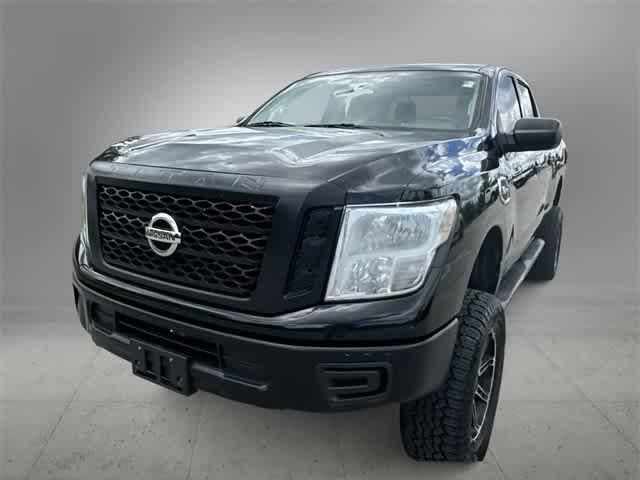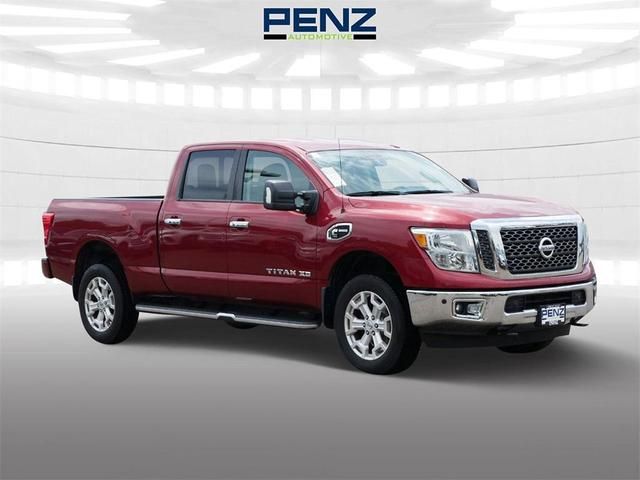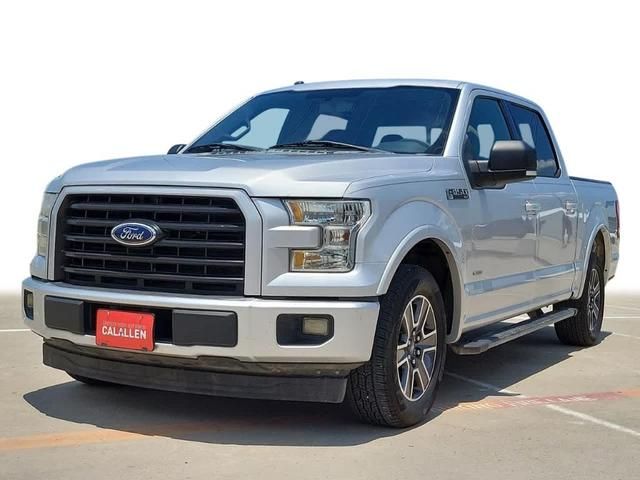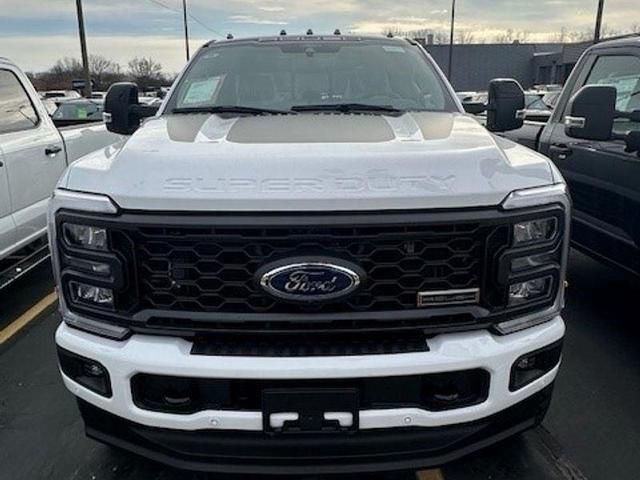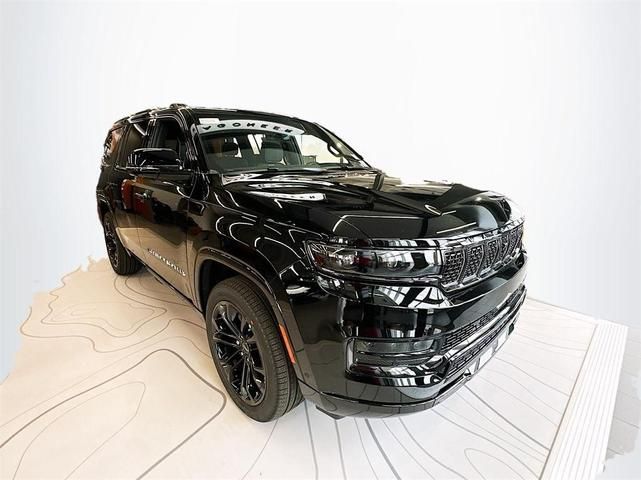
2024 NISSAN TITAN XDVIN: 1N6AA1FB2RN112571
Historical Records
REBUILT TITLE ISSUED
Collision damage reported
Damage to rear
| Year | 2024 |
| ODO | 535 mi |
| Seller | Hidden text (Hidden text) |
| MSRP | $9947 |
| Location | Tallahassee, FL, 32308 |
| Date | appeared 8 days ago latest price $2821 |
| Sale Website Type | classifieds |
| Notes | |
| Hidden text | |



| Body Style | Pickup Truck |
| Color | Glacier White |
| Color (Interior) | Black |
| Transmission | Automatic |
| Engine | Endurance 5.6L V-8 gasoline direct injection, DOHC, variable val |
| Drive | Four-wheel Drive |
| Fuel Type | Gasoline |
- 7154
- 5.6L Endurance V8 Engine
- Hidden text
- Air Conditioning
- Hidden text
- Antenna Fixed audio antenna
- Hidden text
- Auto headlights Intelligent Auto Headlights (I-AH) auto on/off headlight con...
- Hidden text
- Battery charge warning
- Hidden text
- Blind Spot Monitor
- Hidden text
- Brake assist system
- Hidden text
- Clock In-radio display clock
- Hidden text
- Day/night rearview mirror
- Hidden text
- Door mirror style Black door mirrors
- Hidden text
- Driver Information Center
- Hidden text
- Easy Lift Tailgate
- Hidden text
- Engine Cylinders Endurance V8
- Hidden text
- External memory NissanConnect external memory control
- Hidden text
- Fob window controls Keyfob window control
- Hidden text
- Front Anti-Roll Bar
- Hidden text
- Front seat type Captain front seats
- Hidden text
- Fully Automatic Headlights
- Hidden text
- Headlight type Projector beam headlights
- Hidden text
- High mount stop light High mounted center stop light
- Hidden text
- Illuminated Sill Plates
- Hidden text
- Key in vehicle warning
- Hidden text
- Laminated window Laminated side window glass
- Hidden text
- Low level warnings Low level warning for oil, fuel, washer fluid and brake f...
- Hidden text
- Navigation system: NissanConnect Navigation
- Hidden text
- Oil pressure gage
- Hidden text
- Overhead airbags Curtain first and second-row overhead airbags
- Hidden text
- Panel insert Metal-look instrument panel insert
- Hidden text
- Pedestrian detection Pedestrian Automatic Emergency Braking (PAEB)
- Hidden text
- Power Steering
- Hidden text
- Radio data system
- Hidden text
- Rear Springs Regular grade rear springs
- Hidden text
- Rear head restraint control 2 rear seat head restraints
- Hidden text
- Rear seatback upholstery Carpet rear seatback upholstery
- Hidden text
- Rearview mirror Auto-dimming rear view mirror
- Hidden text
- Seatback storage pockets 1 seatback storage pocket
- Hidden text
- Sequential Shift Control
- Hidden text
- Speakers Fender speakers
- Hidden text
- Speed-Sensing Steering
- Hidden text
- Steering type Re-circulating ball steering
- Hidden text
- Suspension ride type rear Rigid axle rear suspension
- Hidden text
- Tilt steering wheel
- Hidden text
- Towing class Class IV tow rating
- Hidden text
- Traffic sign information Traffic Sign Recognition (TSR)
- Hidden text
- Trip odometer
- Hidden text
- Valet key
- Hidden text
- Visor passenger mirror Passenger visor mirror
- Hidden text
- Windshield trim Black windshield trim
- 5904
- 4WD type Part-time 4WD
- Hidden text
- Adaptive Cruise Control
- Hidden text
- Android Auto
- Hidden text
- Auto door locks Auto-locking doors
- Hidden text
- Basic warranty 60 month/100,000 miles
- Hidden text
- Beverage holders rear Rear beverage holders
- Hidden text
- Brake Assist
- Hidden text
- Climate control Automatic climate control
- Hidden text
- Cylinder head material Aluminum cylinder head
- Hidden text
- Door locks Power door locks with 2 stage unlocking
- Hidden text
- Driver Foot Rest
- Hidden text
- Dual-Zone Front Climate Control
- Hidden text
- Emissions tiers Tier 3 emissions
- Hidden text
- Engine/electric motor temperature gage
- Hidden text
- Fob engine controls Intelligent Key with hands-free access and push button s...
- Hidden text
- Front Center Armrest
- Hidden text
- Front reading lights
- Hidden text
- Fuel Type Premium Unleaded
- Hidden text
- Handsfree Bluetooth handsfree wireless device connectivity
- Hidden text
- Height adjustable seatbelts Front height adjustable seatbelts
- Hidden text
- Illuminated ignition switch
- Hidden text
- Internet access Wi-Fi Hotspot mobile hotspot internet access
- Hidden text
- LED brake lights
- Hidden text
- Locking hub control Auto locking hub control
- Hidden text
- Navigation System
- Hidden text
- Off Road Protection Package (K94)
- Hidden text
- Overhead Airbag
- Hidden text
- Paint Clearcoat paint
- Hidden text
- Passenger Vanity Mirror
- Hidden text
- Power driver seat controls Driver seat power reclining, lumbar support, cush...
- Hidden text
- Radio AM/FM/digital/SiriusXM /satellite
- Hidden text
- Rear Cross Traffic Alert
- Hidden text
- Rear console climate control ducts
- Hidden text
- Rear seat upholstery Cloth and vinyl rear seat upholstery
- Hidden text
- Rear windshield Power rear windshield
- Hidden text
- Satellite trial 3 month satellite trial subscription
- Hidden text
- Selectable Mode Transmission
- Hidden text
- Spare tire location Crank-down spare tire
- Hidden text
- Speed-Sensitive Wipers
- Hidden text
- Steering mounted audio control Steering wheel mounted audio controls
- Hidden text
- Suspension ride type front Independent front suspension
- Hidden text
- Temperature display Exterior temperature display
- Hidden text
- Towing capability Trailer towing capability
- Hidden text
- Traction control All-speed ABS and driveline traction control
- Hidden text
- Transmission temperature gage Transmission fluid temperature gage
- Hidden text
- Under seat tray rear Locking rear under seat tray
- Hidden text
- Visor passenger expandable coverage Passenger visor with expandable coverage...
- Hidden text
- Window Trim Black side window trim
- 5703
- 4.083 Axle Ratio
- Hidden text
- Adaptive Cruise Control
- Hidden text
- Amplifier
- Hidden text
- Auto High-Beam Headlights
- Hidden text
- Backup camera
- Hidden text
- Beverage holders Front beverage holders
- Hidden text
- Brake Assist
- Hidden text
- Child door locks Manual rear child safety door locks
- Hidden text
- Cruise control Cruise control with steering wheel mounted controls
- Hidden text
- Door handle material Black door handles
- Hidden text
- Driver Door Bin
- Hidden text
- Dual front side impact airbags
- Hidden text
- Emissions Federal emissions
- Hidden text
- Engine temperature warning
- Hidden text
- Floor mats Carpet front and rear floor mats
- Hidden text
- Front Captain's Seats
- Hidden text
- Front impact airbag passenger Passenger front impact airbag
- Hidden text
- Front Wheel Independent Suspension
- Hidden text
- Grille style Black grille with body-color surround
- Hidden text
- Heated door mirrors Heated driver and passenger side door mirrors
- Hidden text
- Illuminated Glove Box
- Hidden text
- Interior courtesy lights Fade interior courtesy lights
- Hidden text
- LCD primary display size 9 inch primary LCD display
- Hidden text
- Lock-up transmission
- Hidden text
- Multiple headlights Multiple enclosed headlights
- Hidden text
- Occupant Sensing Airbag
- Hidden text
- Overdrive Transmission
- Hidden text
- Pro-4X Style Cloth Seat Trim
- Hidden text
- Passenger seat direction Front passenger seat with 4-way directional control...
- Hidden text
- Power Driver Seat
- Hidden text
- radiator
- Hidden text
- Real time weather SiriusXM Travel Link real-time weather
- Hidden text
- Rear collision warning Rear Automatic Braking (RAB) collision mitigation
- Hidden text
- Rear seat folding position Fold-up rear seat cushion
- Hidden text
- Rear window trim Black rear window trim
- Hidden text
- Running lights LED daytime running lights
- Hidden text
- Seek scan
- Hidden text
- Spare tire Full-size spare tire with aluminum wheel
- Hidden text
- Speed Sensitive Wipers
- Hidden text
- Steering Hydraulic power-assist steering system
- Hidden text
- Suspension Off-road ride suspension
- Hidden text
- Telescoping Steering Wheel
- Hidden text
- Towing brake controller Trailer brake controller
- Hidden text
- Traction Control
- Hidden text
- Transmission Oil Cooler
- Hidden text
- USB ports 4 USB ports
- Hidden text
- Visor driver mirror Driver visor mirror
- Hidden text
- Wheels: 18in x 7.5in Painted Dark Finish Alloy
- Hidden text
- 12 Speakers
- 5323
- ABS Brakes 4-wheel antilock (ABS) brakes
- Hidden text
- Air conditioning Yes
- Hidden text
- Anti-roll bar front Front anti-roll bar
- Hidden text
- Auto high-beam headlights High Beam Assist (HBA) auto high-beam headlights
- Hidden text
- Battery run down protection
- Hidden text
- Blind Spot Warning
- Hidden text
- Brake type 4-wheel disc brakes
- Hidden text
- Compass
- Hidden text
- Delay off headlights Delay-off headlights
- Hidden text
- Door mirror type Manual extendable trailer mirrors
- Hidden text
- Driver lumbar Driver seat with 2-way power lumbar
- Hidden text
- EASY LOWER TAILGATE
- Hidden text
- Engine Endurance 5.6L V-8 gasoline direct injection, DOHC, variable valve co...
- Hidden text
- First-row windows Power first-row windows
- Hidden text
- Fog lights LED front fog lights
- Hidden text
- Front Dual Zone A/C
- Hidden text
- Front seat upholstery Cloth and vinyl front seat upholstery
- Hidden text
- Gage cluster display size (inches) Gage cluster display size: 7.00
- Hidden text
- Headlights LED low and high beam headlights
- Hidden text
- Hill control Hill descent control
- Hidden text
- Immobilizer
- Hidden text
- Keyfob door locks Keyfob activated door locks
- Hidden text
- Lane Departure Warning
- Hidden text
- Low Tire Pressure Warning
- Hidden text
- Number of airbags 8 airbags
- Hidden text
- Oil pressure warning
- Hidden text
- Overhead console
- Hidden text
- Panic alarm
- Hidden text
- Perimeter approach lighting Remote activated perimeter approach lighting wit...
- Hidden text
- Power Windows
- Hidden text
- Radio: Nissanconnect W/Navigation
- Hidden text
- Rear Anti-Roll Bar
- Hidden text
- Rear head restraint control Manual rear seat head restraint control
- Hidden text
- Rear seats fixed or removable Fixed rear seats
- Hidden text
- Remote Keyless Entry
- Hidden text
- Seatbelt pretensioners Front seatbelt pretensioners
- Hidden text
- Service interval warning Service interval indicator
- Hidden text
- Speakers number 12 speakers
- Hidden text
- Split folding rear seat
- Hidden text
- Steering type number of wheels 2-wheel steering system
- Hidden text
- Suspension type front Double wishbone front suspension
- Hidden text
- Tinted windows Deep tinted windows
- Hidden text
- Towing hitch Trailer hitch
- Hidden text
- Transfer case Electronic transfer case shift
- Hidden text
- Turn signal in door mirrors Turn signal indicator in door mirrors
- Hidden text
- Variable panel light Variable instrument panel light
- Hidden text
- Voice activated audio Siri Eyes Free voice activated audio controls
- Hidden text
- Wipers Variable intermittent front windshield wipers
VIN Decoder — 50 records
Anti-lock Braking System (ABS) means a portion of a service brake system that automatically controls the degree of rotational wheel slip during braking by: (1) Sensing the rate of angular rotation of the wheels; (2) Transmitting signals regarding the rate of wheel angular rotation to one or more controlling devices that interpret those signals and generate responsive controlling output signals; and (3) Transmitting those controlling signals to one or more modulator devices that adjust brake actuating forces in response to those signals.
An auto-reverse system enables power windows and sunroofs on motor vehicles to automatically reverse direction when such power windows and panels detect an obstruction. This feature can prevent children and others from being trapped, injured, or killed by the power windows and sunroofs.
ESC is a computerized technology that improves a vehicle's stability by detecting and reducing loss of traction (skidding). When ESC detects loss of steering control, it automatically applies the brakes to help steer the vehicle in the driver's intended direction. Braking is automatically applied to wheels individually, such as the outer front wheel to counter oversteer, or the inner rear wheel to counter understeer. Some ESC systems also reduce engine power until control is regained.
A keyless ignition system permits starting a car without a physical key being inserted into an ignition. Instead, a small device known as a "key fob" transmits a code to a computer in the vehicle when the fob is within a certain close range. When the coded signal matches the code embedded in the vehicle's computer, a number of systems within the car are activated, including the starter system. This allows the car to be started by simply pressing a button on the dashboard while the key fob is left in a pocket or a purse. The vehicle is usually shut down by pushing the same button.
A TPMS is an electronic system designed to monitor the air pressure inside the pneumatic tires on various types of vehicles. TPMS can be divided into two different types - direct and indirect. Direct TPMS employ pressure sensors on each wheel, either internal or external. The sensors physically measure the tire pressure in each tire and report it to the vehicle's instrument cluster or a corresponding monitor. Indirect TPMS does not use physical pressure sensors but measure air pressures by monitoring individual wheel rotational speeds and other signals available outside of the tire itself.
When the traction control computer detects a driven wheel or wheels spinning significantly faster than another, it invokes an electronic control unit to apply brake friction to wheels spinning due to loss of traction. This braking action on slipping wheels will cause power transfer to the wheels with traction due to the mechanical action within the differential.
A backup camera, also known as a rearview video system, helps prevent back-over crashes and protects our most vulnerable people - children and senior citizens - by providing an image of the area behind the vehicle. A backup camera helps the driver see behind the vehicle while in reverse.
A parking assist system uses computer processors, back up cameras, surround-view cameras, and sensors to assist with steering and other functions during parking. Drivers may be required to accelerate, brake, or select gear position. Some systems are capable of parallel and perpendicular parking. Drivers must constantly supervise this support feature and maintain responsibility for parking.
A CIB system is an automatic emergency braking system designed to detect an impending forward crash with another vehicle. CIB systems automatically apply the brakes in a crash imminent situation to slow or stop the vehicle, avoiding the crash or reducing its severity, if the driver does not brake in response to a forward collision alert.
A DBS system is an automatic emergency braking system designed to detect an impending forward crash with another vehicle. DBS systems automatically supplement the driver's braking in an effort to avoid a crash if the driver does not brake hard enough to avoid it.
An FCW system monitors a vehicle's speed, the speed of the vehicle in front of it, and the distance between the vehicles. If the vehicles get too close due to the speed of either vehicle, the FCW system will warn the driver of the rear vehicle of an impending crash so that the driver can apply the brakes or take evasive action, such as steering, to prevent a potential crash. FCW systems provide an audible, visual, or haptic warning, or any combination thereof, to alert the driver of an FCW-equipped vehicle of a potential collision.
BSW alerts drivers with an audio or visual warning if there are vehicles in adjacent lanes that the driver may not see when making a lane change.
An LDW system monitors lane markings and alerts the driver if their vehicle drifts out of their lane without a turn signal or any control input indicating the lane departure is intentional. An audio, visual or other alert warns the driver of the unintentional lane shift so the driver can steer the vehicle back into its lane.
A semi-automatic headlamp beam switching device provides automatic or manual control of beam switching at the option of the driver. When the control is automatic, the headlamps switch from the upper beam to the lower beam when illuminated by the headlamps on an approaching car and switch back to the upper beam when the road ahead is dark. When the control is manual, the driver may obtain either beam manually regardless of the condition of lights ahead of the vehicle.
Engine displacement (in cubic centimeters) is the volume swept by all the pistons inside the cylinders of a reciprocating engine in a single movement from top dead center to bottom dead center.
Engine displacement (in cubic inches) is the volume swept by all the pistons inside the cylinders of a reciprocating engine in a single movement from top dead center to bottom dead center.
Body Class presents the body type based on 49 CFR 565.12(b): "Body type means the general configuration or shape of a vehicle distinguished by such characteristics as the number of doors or windows, cargo-carrying features and the roofline (e.g., sedan, fastback, hatchback)." Definitions are not provided for individual body types in the regulation.
Gross vehicle weight rating (GVWR) is the maximum operating weight of a vehicle including the vehicle's chassis, body, engine, engine fluids, fuel, accessories, driver, passengers and cargo, but excluding that of the trailers. Per 49 CFR 565.15, Class 1 is further broken down to Class A-D; Class 2 is further broken down to Class E-H. This field captures the lower bound of GVWR range for the vehicle.
Cab type applies to both pickup truck and other medium- and heavy-duty trucks. The cab or cabin of a truck is the inside space in a truck where the driver is seated. For pickup trucks, the cab type is categorized by the combination number of doors and number of rows for seating. For medium- and heavy-duty trucks (MDHD), the cab type is categorized by the relative location of engine and cab.
For pickup trucks, there are four cab types.
- Regular: 2 door, 1 row of seats
- Extra/Super/Quad/Double/King/Extended: 2 doors, 2 rows of seats
- Crew/Super Crew/Crew Max: 4 doors, 2 rows of seats
- Mega: 4 doors, 2 rows of seats (with a bigger cabin than crew cab type)
For medium- and heavy-duty (MDHD) trucks, there are several categories as listed below.
- Cab Beside Engine
- CAE: Cab Above Engine
- CBE: Cab Behind Engine
- COE: Cab Over Engine or Flat Nose: Driver sits on top of the front axle and engine
- LCF: Low Cab Forward
- Conventional: Driver sits behind the engine
- Non-Tilt
- Tilt
Per 49 CFR 565, Model means a name that a manufacturer applies to a family of vehicles of the same type, make, line, series and body type.
If the model year (MY) is supplied when the VIN is decoded, such as from a crash report or a vehicle registration record, the MY value will be the supplied MY, even if the MY decoded from the VIN differs from the supplied MY. If the MY is not supplied when the VIN is decoded, the MY value will be decoded from the 10th character in the VIN.
Note is used to store any additional information that does not correspond to any of the specified fields on the interface. This is a catch-all element for systems other than for engine, restraint system, brake and battery. Engine, restraint system, brake, and battery have their own note elements.
This data element captures the city of the manufacturing plant where the manufacturer affixes the VIN.
This data element captures the name of the company that owns the manufacturing plant where the manufacturer affixes the VIN.
This data element captures the country of the manufacturing plant where the manufacturer affixes the VIN.
This data element captures the State or Province name within the Plant Country of the manufacturing plant where the manufacturer affixes the VIN.
This field captures the location of curtain air bags. Curtain air bags are side air bags that protect the head.




